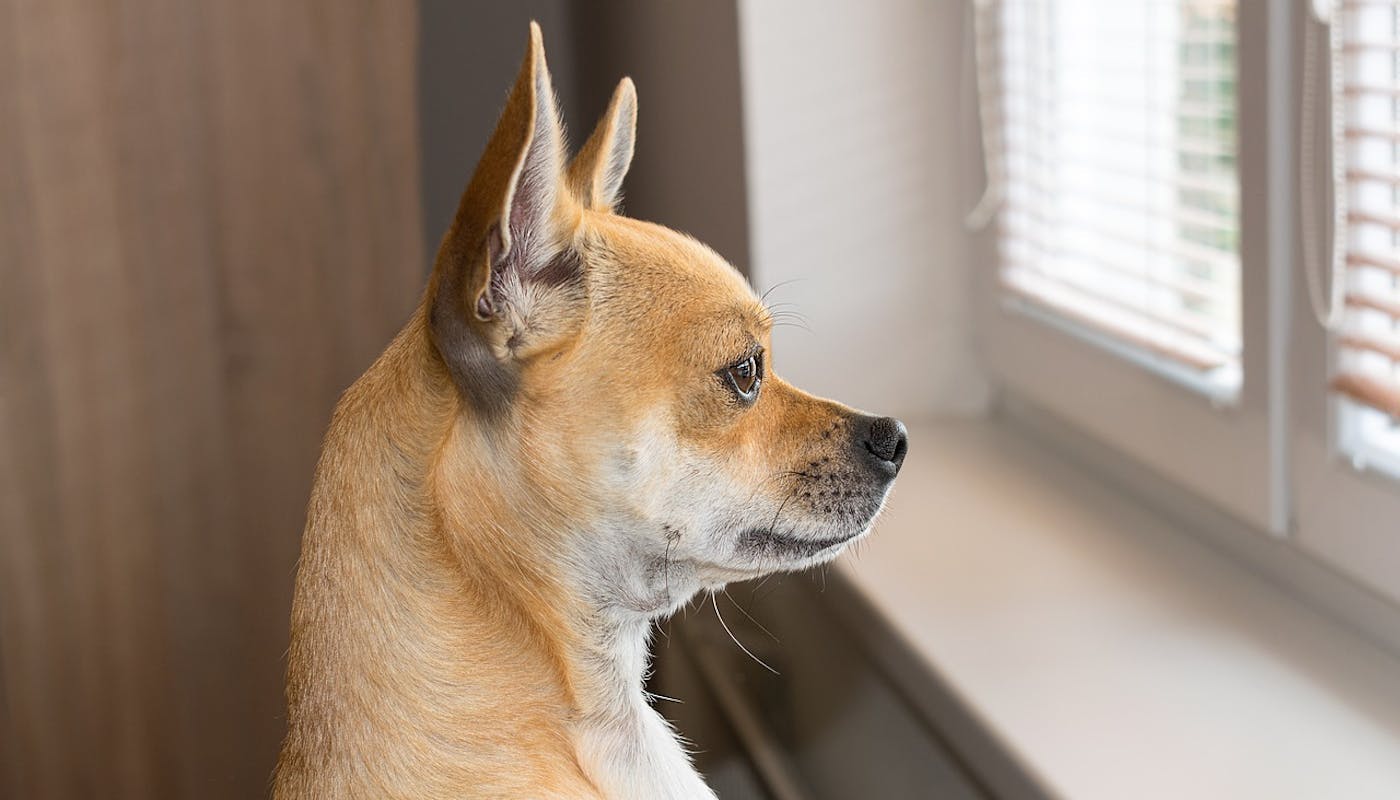Leaving My Dog at Home – How Long is Too Long?
Sometimes it’s necessary to leave our dogs at home alone. How long is too long to leave them when you’re going somewhere they aren’t invited?
Dogs Love Company…
Dogs are pack animals. Their wild ancestors lived in family groups, with protective parents who guard and feed their offspring. (Contrary to previous belief, there was no jostling for leadership – Mom and Dad would generally rule the pack.)
Now that dogs have been domesticated, we humans have become their providers and companions. They’ve bonded with us and they’re not solitary creatures by nature.
So, if your dog likes to lie on your feet, or follows you to the bathroom, that’s normal. They love being near to their chosen humans.
How Long Can a Dog Be Left Home?
In general, we recommend finding a dog-walker or pet-sitter for the regular times when you expect to be out. But there will be occasions when you need to leave your dog and you’re not sure how long you will be.
If you’re leaving your dog at home, most experts advise a limit of around 3-4 hours. But this depends on the breed and nature of the dog.
Very active dogs will naturally struggle with periods of confinement, while some young or busy dogs will suffer from boredom/learn/dog-lifestyle/do-dogs-get-bored. Many breeds have been purposely developed as ‘companion’ dogs, which means they don’t adapt well to solidarity. And older dogs, too, are more likely to worry about being left alone, especially if they have conditions like arthritis/learn/dog-health/why-do-my-dogs-joints-click, cognitive disorder/learn/dog-health/sundown-syndrome-in-dogs, or incontinence/learn/dog-health/why-is-my-female-dog-suddenly-peeing-indoors.
However, in many cases, a well-socialized young dog can be conditioned to accept 3-4 hours of alone time. If possible, start with shorter periods so that they have the chance to get used to it.
How will you know how long is too long?
Your dog might express their anxiety or boredom vocally/learn/dog-training/how-to-stop-dog-barking-when-left-alone (barking or howling) or physically (destroying furniture or bedding). If they develop separation anxiety/learn/dog-training/separation-anxiety-training-advice-for-dogs, they may suffer from symptoms such as raised heart-rate and rapid breathing, which can cause pacing, panting, defecating, or climbing.
Have you read what happened to FOTP’s Kim when she had to leave her young Australian Shepherd puppy home alone unexpectedly? The photo of what was left of her armchair should be enough proof of what a stressed dog can do when left alone for too long!/learn/dog-diaries/5-things-ive-learned-from-my-australian-shepherd#:~:text=3.%20Australian%20Shepherds%20Don%E2%80%99t%20Like%20Being%20Bored/Stressed
How to Identify Separation Anxiety
Here are some of the symptoms of separation anxiety:
- Distress signals when you prepare to leave
- Following owners around the home
- May be reluctant to spend time alone in the yard
- Pacing or chewing while alone
- Heightened pulse and breathing while alone
- Howling or barking while alone
- Destroying furniture or things while alone
- Urinating or defecating in the home.
How to Help Dogs Who Have Separation Anxiety
In some cases, separation anxiety/learn/dog-health/dog-anxiety-facts-tips-and-treatment-options is triggered by an event – like a storm, neighboring alarm, or fireworks – which distresses the dog while they are alone. But some dogs are sensitive and struggle with disruption to routine. It’s also common in older dogs who may have cognitive or physical issues and become more dependent on routine.
It can be helpful to film your dog while they are left alone – you’ll see whether their anxiety starts immediately or increases at a certain time. To support a dog with suspected separation anxiety, you can:
- Create a safe and welcoming space for them; a crate works for some dogs (but can be risky for those who might attempt to escape). It should be quiet with a comfortable bed.
- Provide additional stimulation, giving them toys or distractions (like puzzle feeders) which they can safely use while you are out of the room.
- Maintain a regular routine, with periods of activity and companionship – and encourage your dog to settle quietly in the between-times.
- Reward relaxed behaviors (rather than attention-seeking nuzzles or nudges), giving treats or affection to your dog when they lie down or go to their bed. You can even introduce a command for ‘settle’.
- ‘Condition’ your dog to accept your absence, starting with very short periods where you go through the motions of leaving and quickly return. Reward them with attention but stay calm throughout.
- When you return from leaving your dog along, don’t make too much of a fuss. You want them to greet you calmly which they’ll only do if you’re calm too.
- Try a relaxing supplement which contains naturally soothing ingredients like chamomile or L-theanine. The One supplement/products/the-one from FOTP contains L-Theanine, Ashwagandha as well as lots of other good stuff to keep your dog healthy from the inside out!
